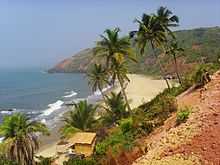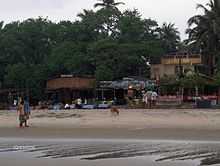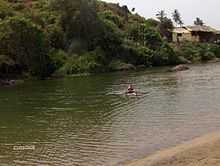Arambol




Arambol Beach is a traditional fisherman village, located approximately a one hour drive from the Dabolim Airport (GOI) within the Pernem administrative region of northern Goa, India. The beach attracts many international tourists, mainly during the winter season between November and March. Arambol has a distinct bohemian feel which is no longer found in other areas, such as Calangute and this inevitably attracts many alternative travellers.
Arambol beach is considered to be one of the most beautiful beaches in Goa, amongst many other popular locations including Vagator, Anjuna and Palolem. It borders North on Keri Beach and South on Mandrem Beach.
Accommodation
Currently no major hotels exist in this area - thanks to local pressure who have successfully campaigned against the construction of any major hotels on the beach. The main type of accommodation are guest houses, houses, homestays and temporary beach shacks which are erected every year during start of the tourist season and dismantled at the end of tourist season. Locals have aptly enforced norms for these to comply to environment friendly operations which ensures that the beaches and adjoining areas are clear of garbage and filth. Rooms are available at reasonable rates when compared to tourist laden beaches such as Baga and Candolim, though prices are rising each year at a fast pace.
Local Culture
The majority of the locals are Hindu, then comes a percentage of people subscribing to the Christian faith and a minority of Muslims. The Church of Our Lady of Mount Carmel serves the religious interests of the many Catholics in the area. Mother Mary is referred to as Saibinn Mai in the local Konkani language.
As in many other parts of Goa, both football and cricket are popular sports with the people of this area.
Attractions
A short walk north off the main beach is a smaller beach with a "fresh water lake" close to the sea which has invigorating hot thermals, making it the perfect place to relax. The water here is a mixture of fresh water and sea water. The jungle valley, enclosed between low hills hide a spectacular Banyan tree. Adjoining the banyan tree there is a stone sculpture created by an American Conceptual and Land art artist Jacek Tylicki Give if you can - Take if you have to also called The Money Stone. It has become a pilgrimage destination.
Due to the composition of both, national and international musicians, Arambol is home to a rich live music scene, dominated by Gypsie-Fusion bands.
Yoga, meditation, live music, dance of many different styles and a variety of healing arts are part of the vibrant scene, that attract travellers from all walks of life.
Arambol is expanding at an exceedingly fast pace and prices are rising for real estate, rent, foods and services.
Activities
Strong winds during the main season make it a significant location for leisure sports, like Paragliding and Kite Surfing. A variety of practitioners in the healing arts offer courses in Yoga, meditation, Odissi Dance and others, instruments (like Tabla, Sitar and other traditional Indian as well as Western instruments).
Events
The Tribal Dance Festival and the Indian Juggling convention (InJuCo), the Goa Contact Festival and In-Touch Festival both offer Contact Improvisation Dance and Somatics, all are scheduled for late January/ early February.
Safety
The Goa Ministry of Tourism has installed a Life Guard facility just in the centre area of the beach (about 3 kilometres South of the main stretch), as the calm waters attract unsuspecting tourists who then regularly get in trouble by strong currents.
Beach Life
Cafés and restaurants have mushroomed all along the shoreline, from the small "Sweet Water Lake" beach all the way to Mandrem. During the season many traders from all over India come to Arambol to sell their goods and merchandise.
Dangers and Annoyances
* Beaches are quite safe in daytime, with only a few incidents of crimes reported. Hawkers frequent the beach, like in any other Goa tourist destination. Male "ear cleaners" dupe tourists by offering their services, sometimes even causing nasty ear infections afterwards.
* Like in any other major tourist destination, incidents of thefts, break-ins, rapes and even murder occur especially during the main tourist season (November till March). Famous is "firang fishing" - where burglars use long poles to steal valuables through windows and "apple picking" where target iPhones or laptops.
* Women are certainly discouraged to walk alone at night on the beaches, in the area around the sweetwater lake, on Arambol Hill and remote, unlit areas.
* Recently also incidents of sexual abuse by massage therapists and Yoga instructors (both Indian and Western) were reported and women are advised to be vigilant. In case of crimes, victims are advised to report to the Arambol Police Outpost in company of a witness to curb such activities in the future.
External links
- Goa beaches in traveltammna A reference guide to goa beaches.
- Arambol beach guide A guide to Arambol beach.
- Reiki Sessions and Courses, Meditation, Tarot Card Reading, Past Life Regressions Sessions ) A Healing Centre Offering Courses and Sessions in Reiki, Karuna Reiki, Meditation, Past Life Regression and Tarot Reading. All aRe Welcomed.
- Arambol Beach pictures and spherical panoramas 360°